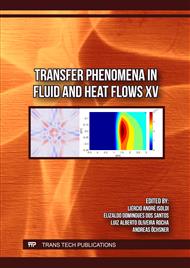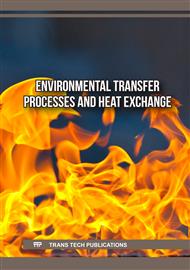p.77
p.91
p.103
p.117
p.127
p.139
p.147
p.155
p.163
Cahn-Hilliard Equation in Noise Reduction and Concentration-Dependent Heat Transfer
Abstract:
The Cahn-Hilliard equation, known for describing the evolution of interfaces in multicomponent systems, can also be employed to noise reduction in mathematical functions and concentration-dependent heat transfer simulations. This work presents a finite difference method discretization of the Cahn-Hilliard equation and explores its applications. For noise reduction, three different noisy functions are simulated, demonstrating effective recovery of original functions despite significant noise levels. In heat transfer simulations, three initial temperature distributions are explored with concentration-dependent thermal diffusivity. Results show that concentration significantly affects thermal diffusivity and heat propagation, leading to non-uniform temperature distributions. Comparative simulations without concentration influence highlight the distinct impact of concentration on thermal behavior. The study underscores a reliable approach to noise reduction and insight into concentration-dependent heat transfer dynamics.
Info:
Periodical:
Pages:
127-136
Citation:
Online since:
September 2024
Price:
Сopyright:
© 2024 Trans Tech Publications Ltd. All Rights Reserved
Share:
Citation:



